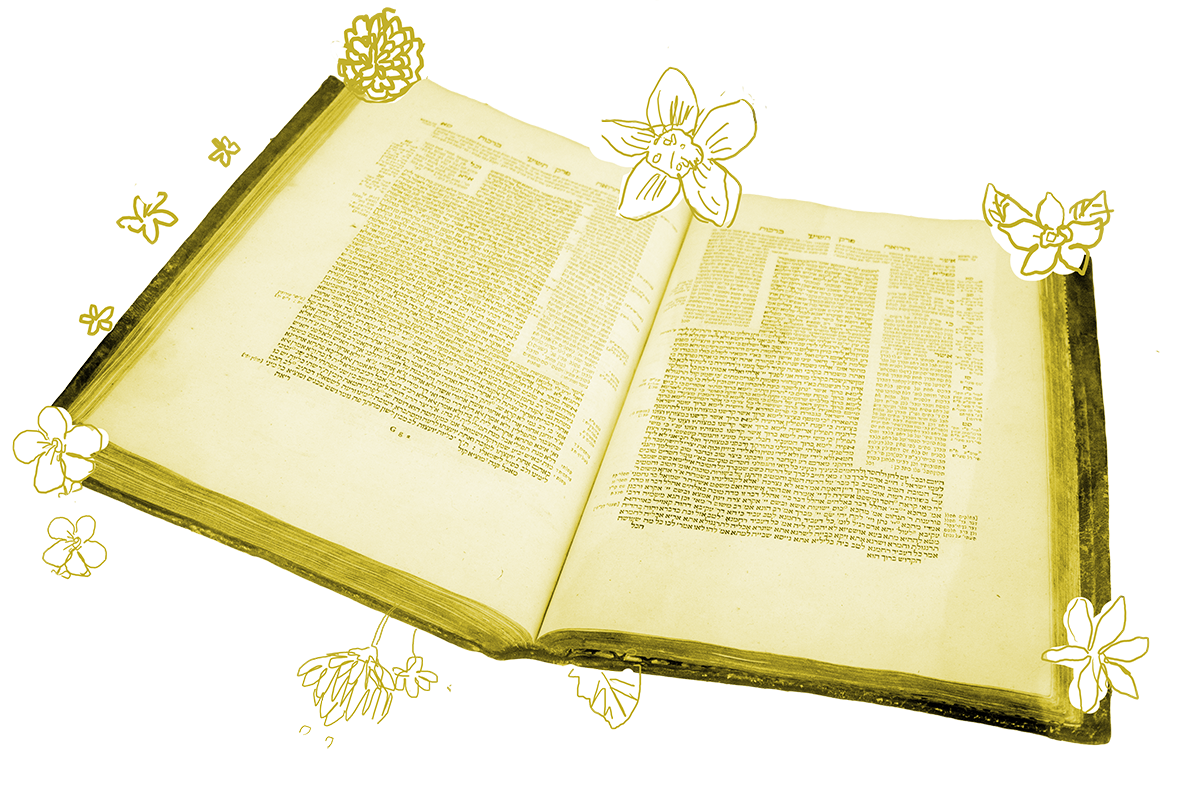The Hebrew Bible is divided into 3 main sections — the Torah, the Prophets and the Writings — each of which can be further subdivided. The Torah, also referred to as the Five Books of Moses, is made up of Genesis, Exodus, Leviticus, Numbers and Deuteronomy. The Prophets includes historical narratives (Joshua, Judges, Samuel I and II and Kings I and II) and collections of prophecies that are attributed to individual prophets (Isaiah, Jeremiah, Ezekiel and 12 others, who are collectively referred to as minor prophets). The Writings includes a mix of poetry (e.g., Psalms), wisdom literature (e.g., Proverbs), stories (e.g., Job) and historical narratives (e.g., Chronicles I and II).
In talmudic times, well before the invention of the internet and printing press, biblical books were hand written on parchment and rolled into scrolls. The conversation on today’s daf considers how they may (or may not) be bundled together. As we learn in a beraita:
A person may attach the Torah, the Prophets, and the Writings together as one — this is the statement of Rabbi Meir.
Rabbi Yehuda says: The Torah by itself, Prophets by themselves, and Writings by themselves.
With your help, My Jewish Learning can provide endless opportunities for learning, connection and discovery.
And the sages say: Each one (of the books of the Prophets and the Writings) by itself.
While Rabbi Meir allows for the creation of a complete Hebrew Bible in one scroll, Rabbi Yehuda holds that each of the three main sections should be separate. The rabbis allow for the combining of the Five Books of Moses into one scroll, but maintain that the books in the other two sections should each have their own unique scroll. Which position is followed? Perhaps all of them.
In support of his own position, Rabbi Yehuda recalls that Baitos ben Zunin had eight books of the Prophets attached together as one scroll, and that he had the approval of Rabbi Elazar ben Azarya to do this. But others cite this precedent differently, suggesting that each of Baitos ben Zunin’s eight prophetic books were contained in their own scroll as the sages demanded. Rabbi Yehuda HaNasi remembers a time when someone brought a scroll that contained the Torah, the Prophets and the Writings attached together as one scroll and it was deemed them fit, in accordance with the position of Rabbi Meir.
At issue here, it appears, is how we are to consider each of the books of the Bible. Do they stand alone as independent books and therefore should not be combined with each other, or are they considered part of a collection such that grouping them is just fine?
The Gemara takes a middle position rejecting the opinion of the sages and allowing for the bundling of multiple books into one scroll, but it adds a stipulation requiring that it be made clear where one book ends and another begins:
Four lines between each book of the Torah, and similarly between one of the Prophets and another. But between each of the books of the Twelve Prophets, three lines. And the scribe may finish a book at the bottom of one column and begin at the top of the next.
Over time, it became standard for the Five Books of Moses to be bundled into one scroll, with scribes continuing the practice outlined here of leaving blank lines between each book. And while the book of Esther is commonly read from a scroll as part of the celebration of Purim, most other biblical texts are recited from a book, not a scroll of parchment, obviating the need for separation with blank space as outlined above.
Today, the Hebrew Bible is also commonly found online and in print and editions come in all shapes, sizes and combinations. Numerous one-volume editions of the entire Bible in Hebrew are widely available, as are multi-volume sets that divide the text into individual volumes or groups of related ones. For example, Song of Songs, Ruth, Lamentations, Ecclesiastes and Esther are often packaged together as the Five Megillot (scrolls) as they are each read as part of the celebrations of Passover, Shavuot, Tisha B’Av, Sukkot and Purim respectively.
And while we have no way of knowing what Baitos ben Zunin’s collection of prophetic books included, we do know that if he were alive today, a visit to his local Jewish book seller would present him with various biblical texts collected in a number of different ways.
Read all of Bava Batra 13 on Sefaria.
This piece originally appeared in a My Jewish Learning Daf Yomi email newsletter sent on July 8, 2024. If you are interested in receiving the newsletter, sign up here.



